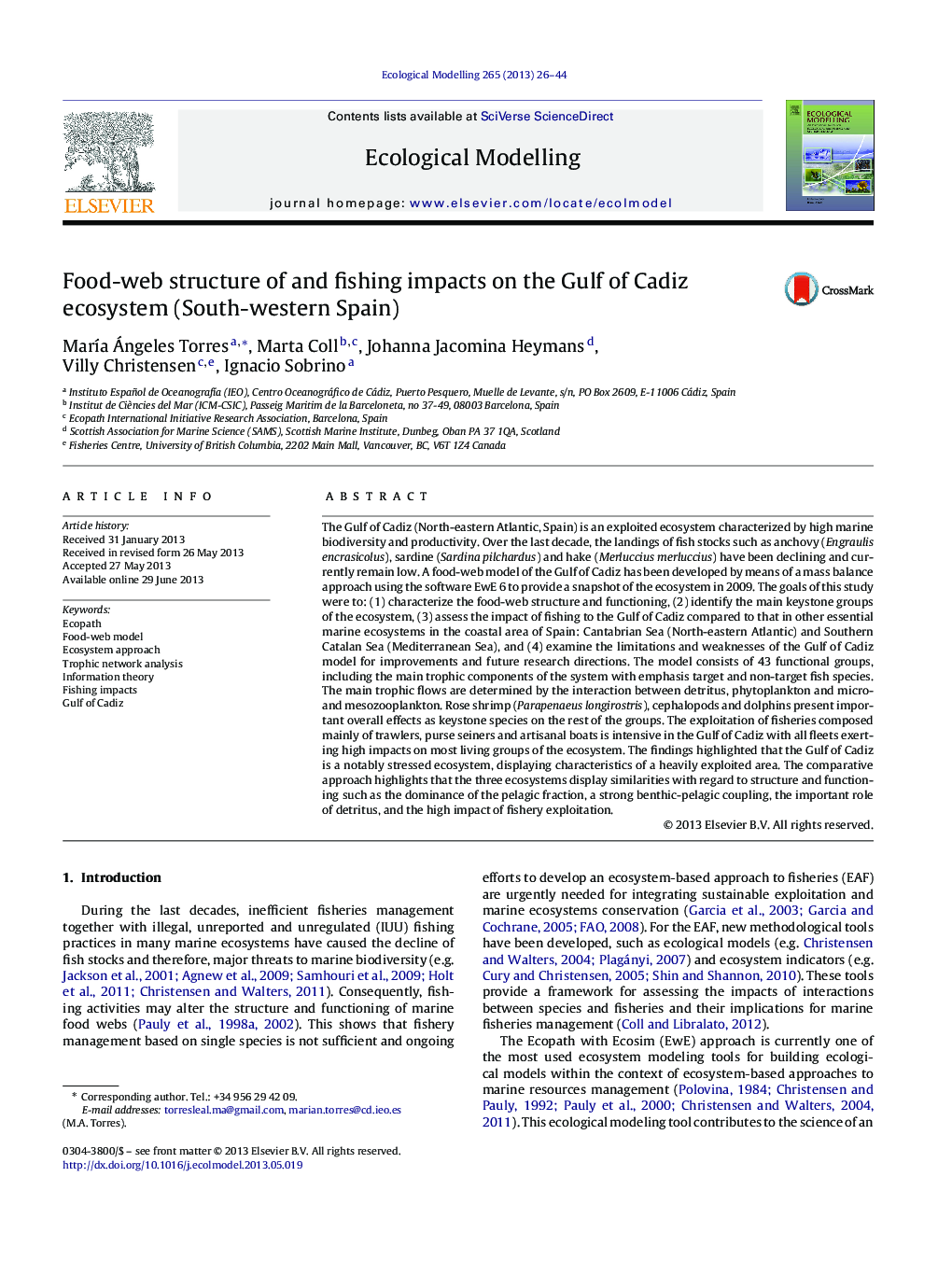| کد مقاله | کد نشریه | سال انتشار | مقاله انگلیسی | نسخه تمام متن |
|---|---|---|---|---|
| 6297065 | 1617481 | 2013 | 19 صفحه PDF | دانلود رایگان |
عنوان انگلیسی مقاله ISI
Food-web structure of and fishing impacts on the Gulf of Cadiz ecosystem (South-western Spain)
ترجمه فارسی عنوان
ساختار غذایی مواد غذایی و ماهیگیری در اکوسیستم خلیج کادیز (جنوب غربی اسپانیا)
دانلود مقاله + سفارش ترجمه
دانلود مقاله ISI انگلیسی
رایگان برای ایرانیان
کلمات کلیدی
موضوعات مرتبط
علوم زیستی و بیوفناوری
علوم کشاورزی و بیولوژیک
بوم شناسی، تکامل، رفتار و سامانه شناسی
چکیده انگلیسی
The Gulf of Cadiz (North-eastern Atlantic, Spain) is an exploited ecosystem characterized by high marine biodiversity and productivity. Over the last decade, the landings of fish stocks such as anchovy (Engraulis encrasicolus), sardine (Sardina pilchardus) and hake (Merluccius merluccius) have been declining and currently remain low. A food-web model of the Gulf of Cadiz has been developed by means of a mass balance approach using the software EwE 6 to provide a snapshot of the ecosystem in 2009. The goals of this study were to: (1) characterize the food-web structure and functioning, (2) identify the main keystone groups of the ecosystem, (3) assess the impact of fishing to the Gulf of Cadiz compared to that in other essential marine ecosystems in the coastal area of Spain: Cantabrian Sea (North-eastern Atlantic) and Southern Catalan Sea (Mediterranean Sea), and (4) examine the limitations and weaknesses of the Gulf of Cadiz model for improvements and future research directions. The model consists of 43 functional groups, including the main trophic components of the system with emphasis target and non-target fish species. The main trophic flows are determined by the interaction between detritus, phytoplankton and micro- and mesozooplankton. Rose shrimp (Parapenaeus longirostris), cephalopods and dolphins present important overall effects as keystone species on the rest of the groups. The exploitation of fisheries composed mainly of trawlers, purse seiners and artisanal boats is intensive in the Gulf of Cadiz with all fleets exerting high impacts on most living groups of the ecosystem. The findings highlighted that the Gulf of Cadiz is a notably stressed ecosystem, displaying characteristics of a heavily exploited area. The comparative approach highlights that the three ecosystems display similarities with regard to structure and functioning such as the dominance of the pelagic fraction, a strong benthic-pelagic coupling, the important role of detritus, and the high impact of fishery exploitation.
ناشر
Database: Elsevier - ScienceDirect (ساینس دایرکت)
Journal: Ecological Modelling - Volume 265, 10 September 2013, Pages 26-44
Journal: Ecological Modelling - Volume 265, 10 September 2013, Pages 26-44
نویسندگان
MarÃa Ángeles Torres, Marta Coll, Johanna Jacomina Heymans, Villy Christensen, Ignacio Sobrino,
